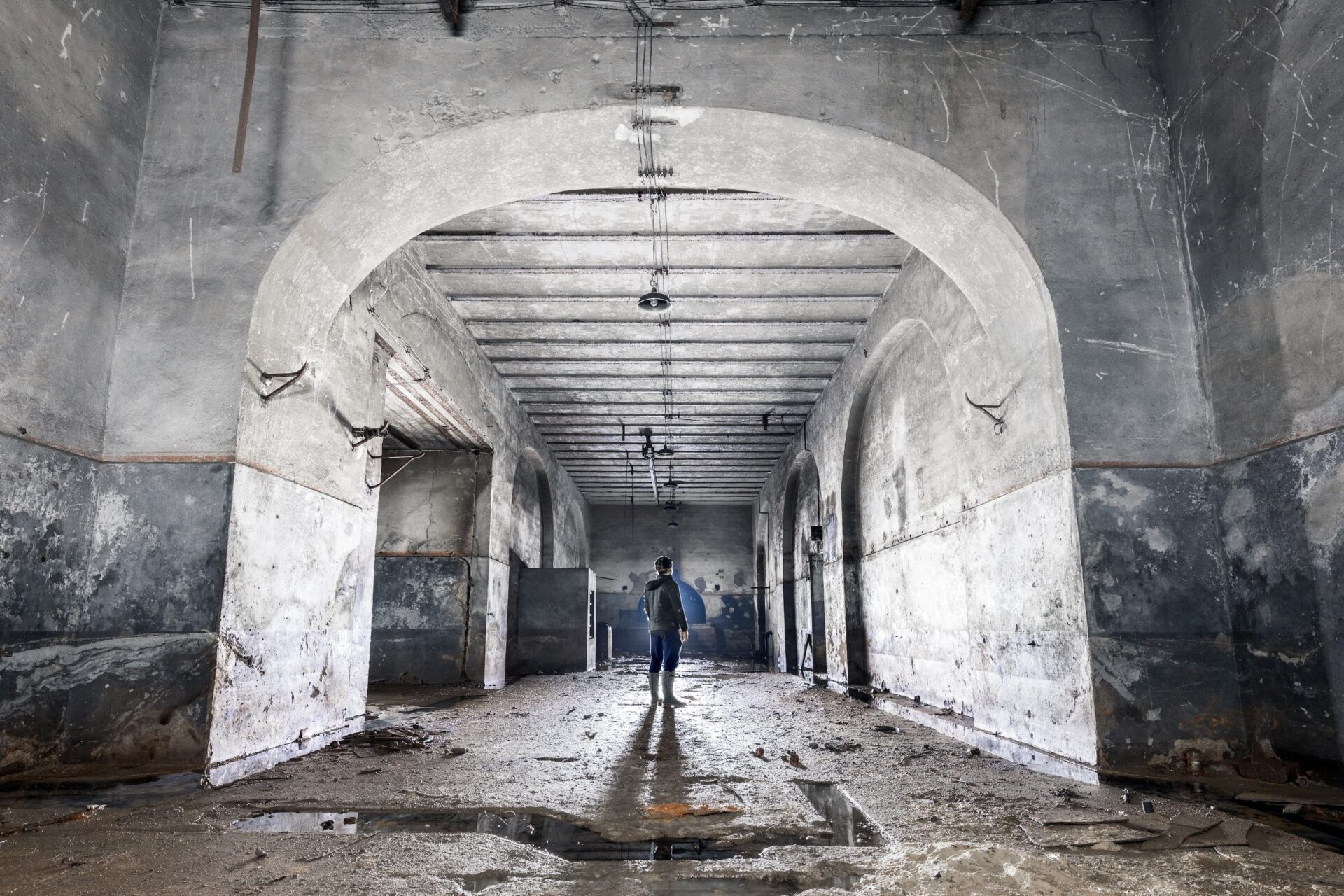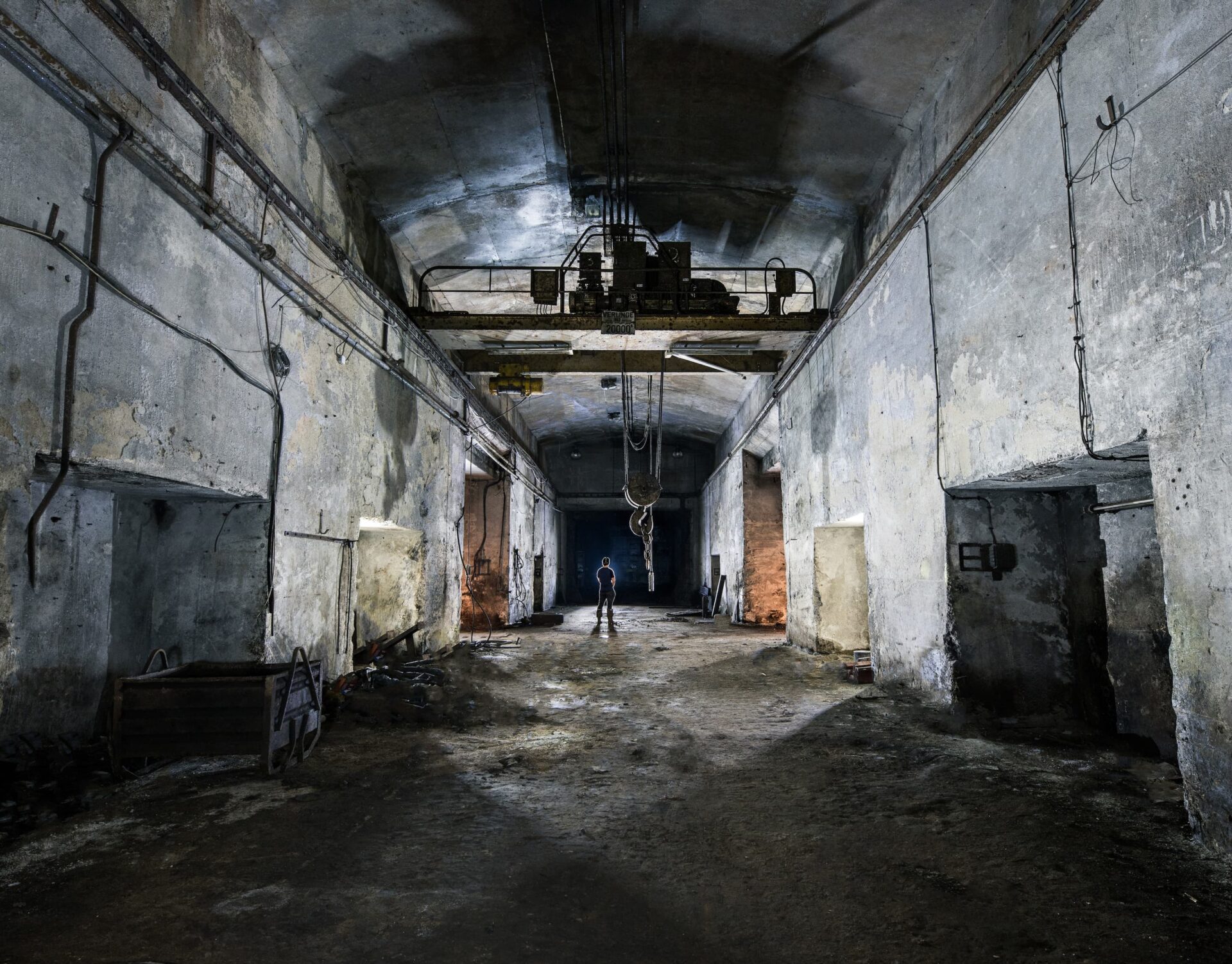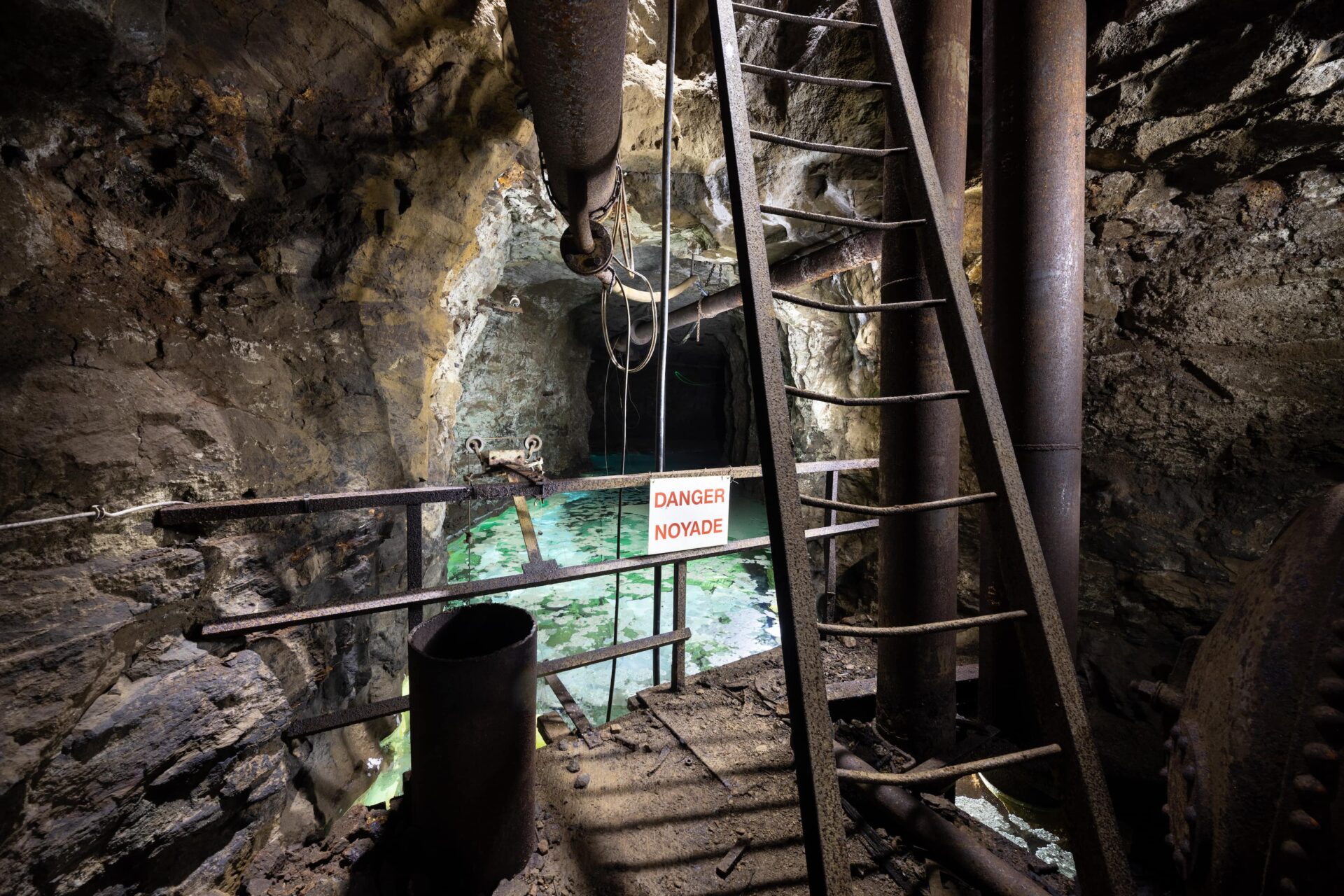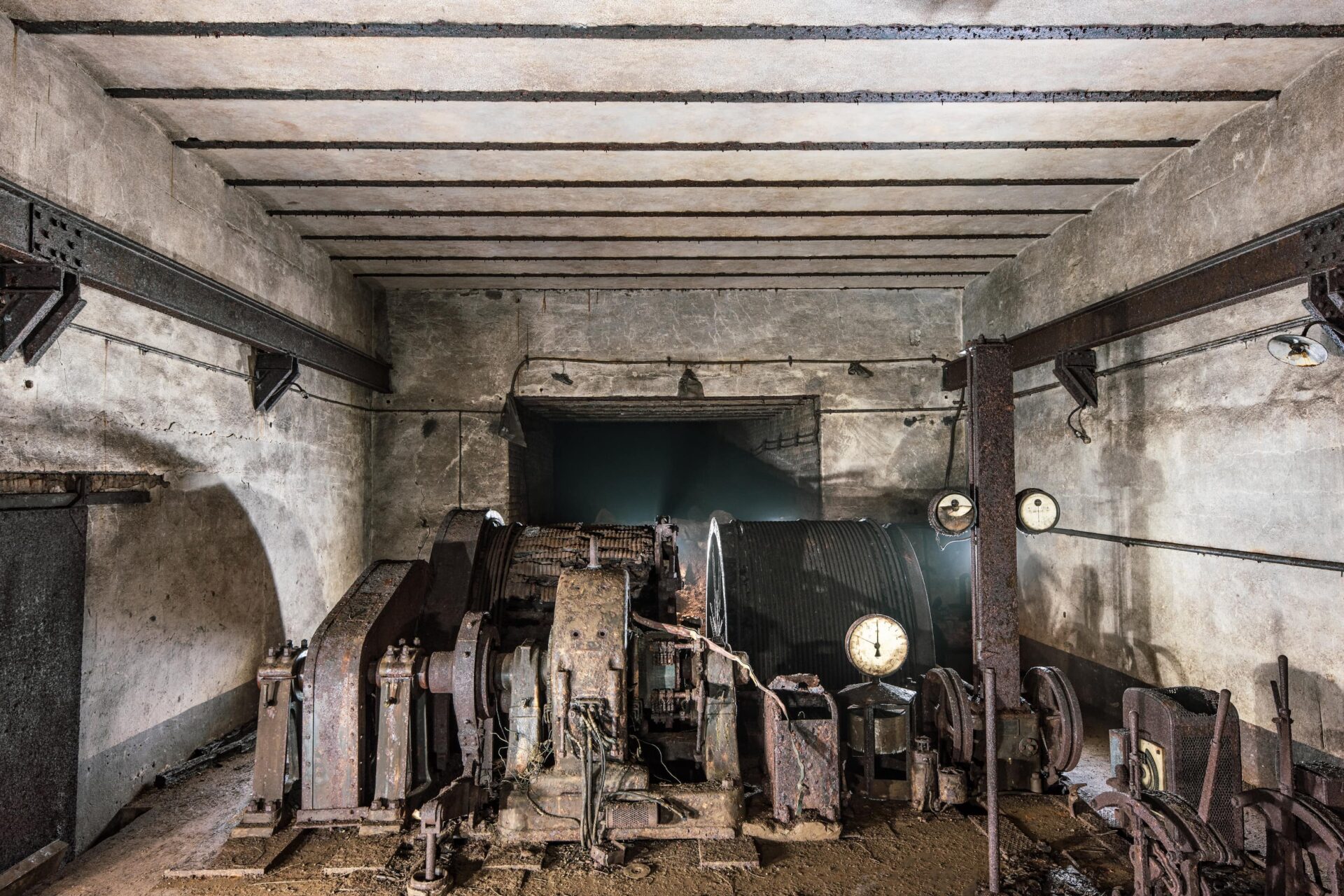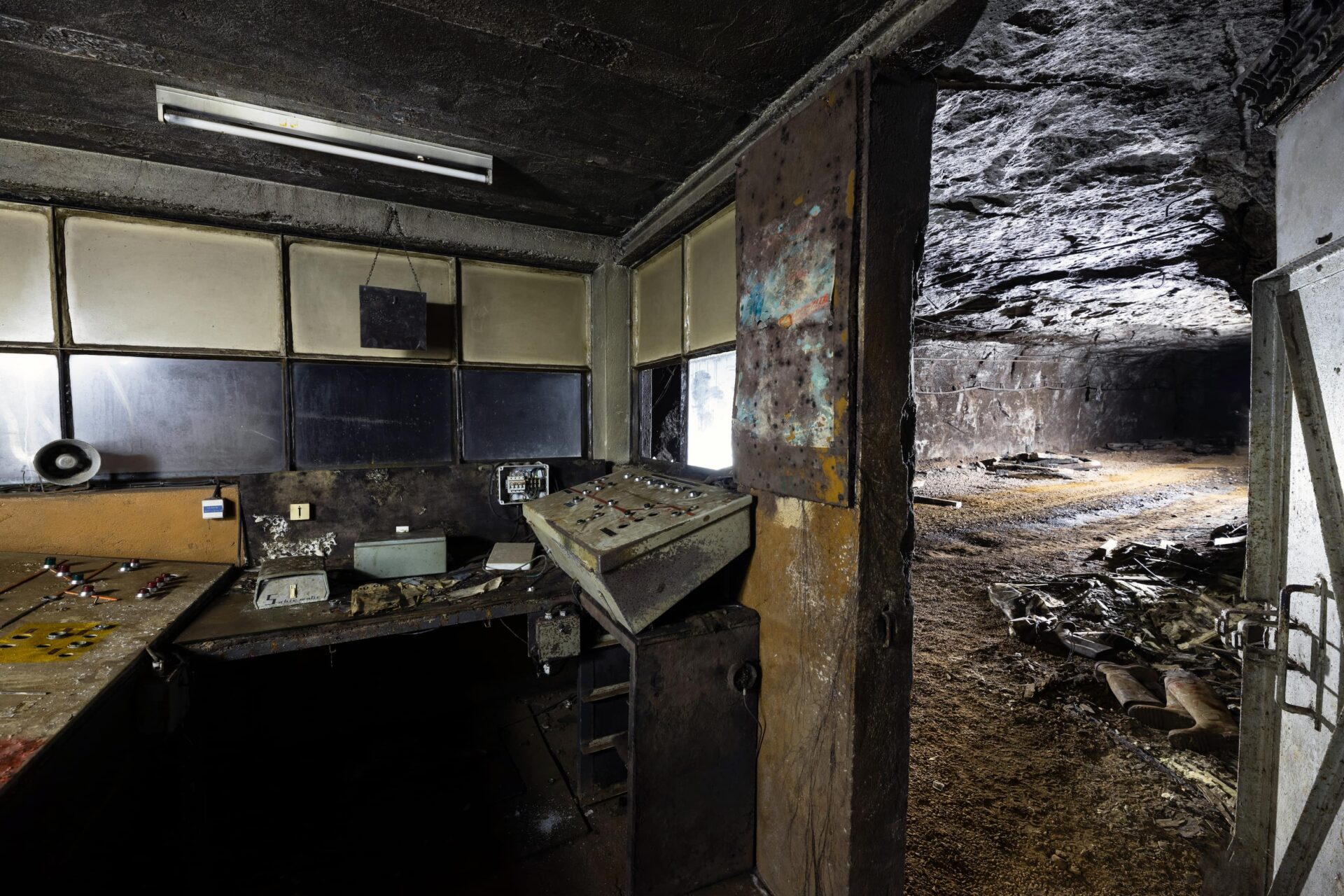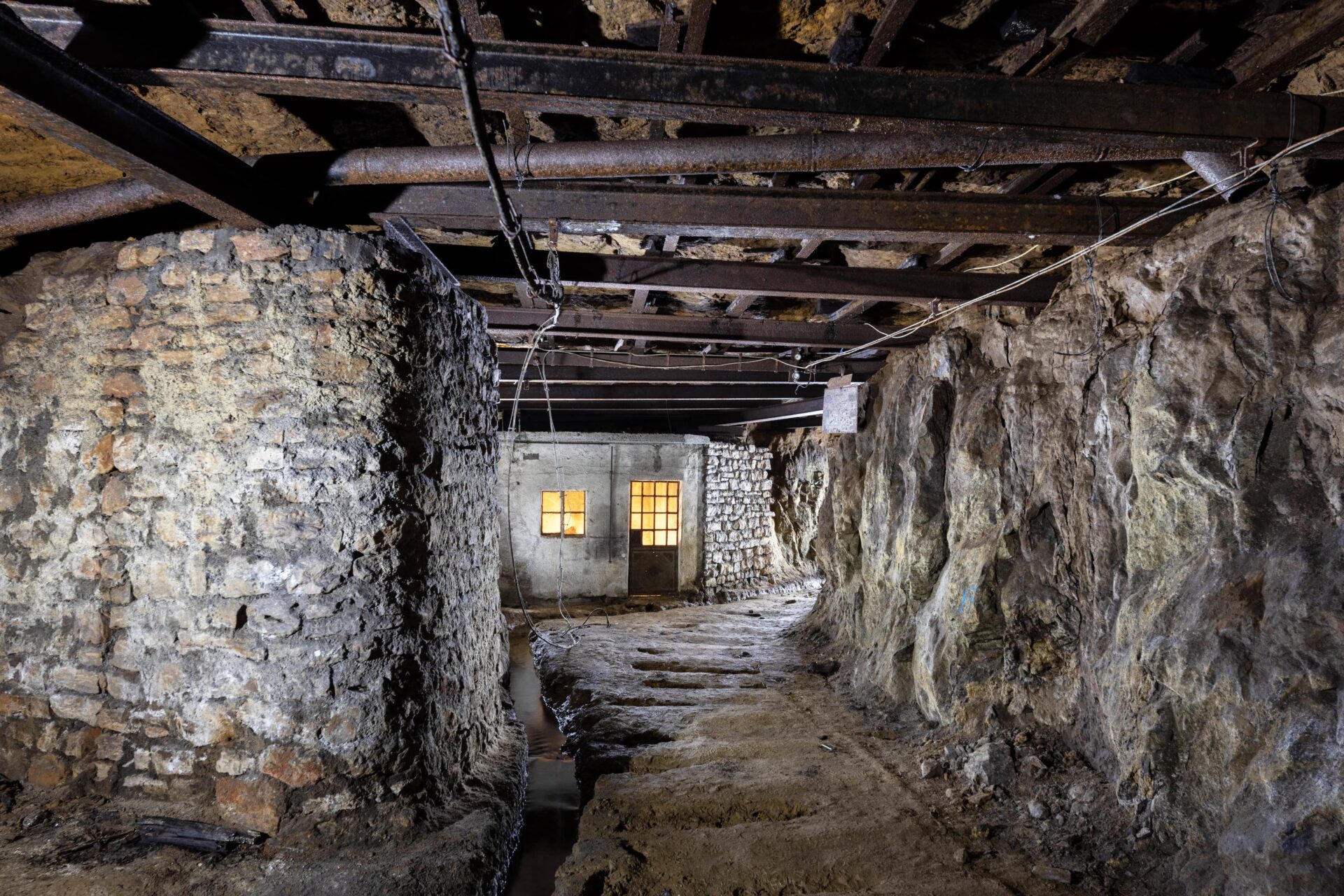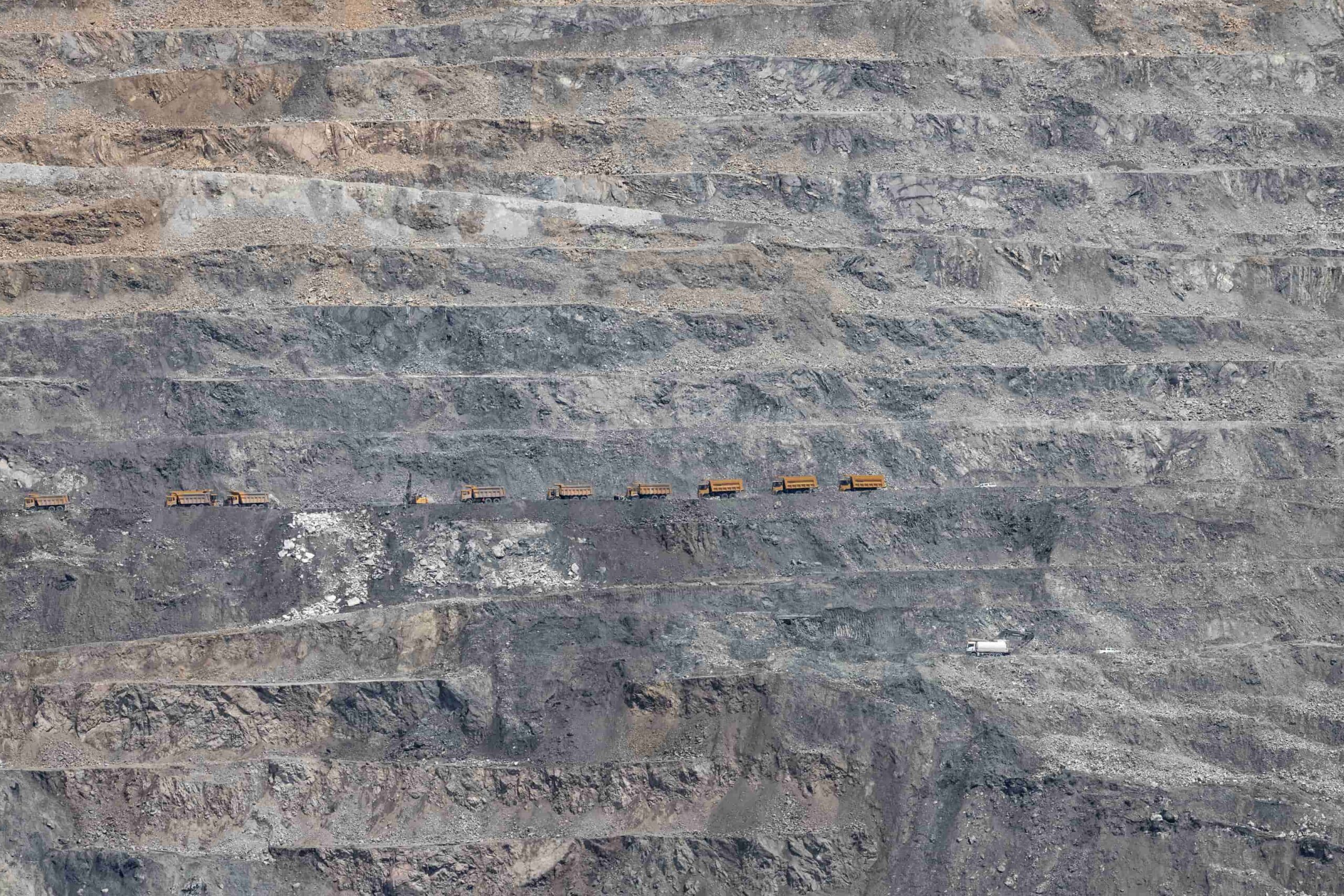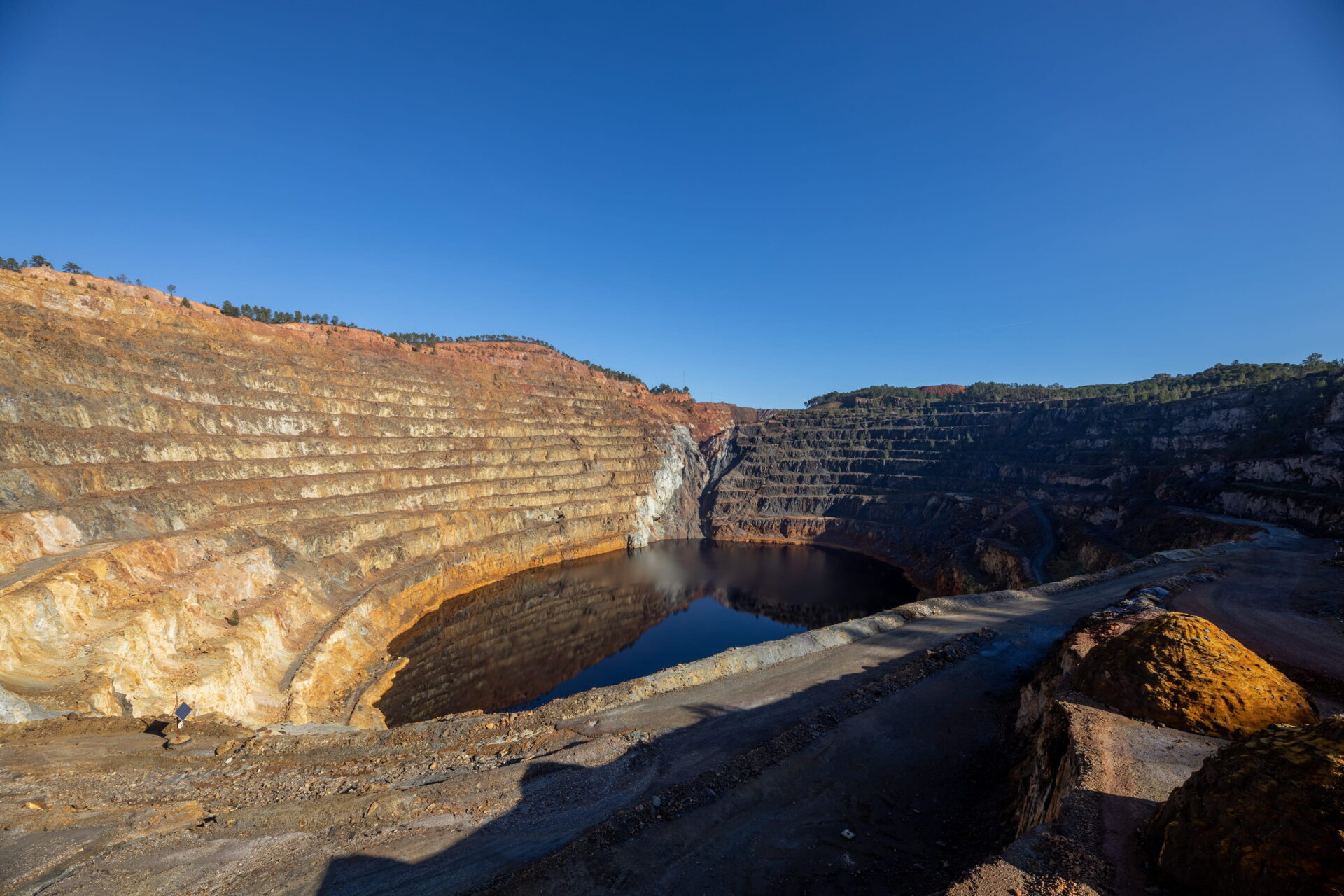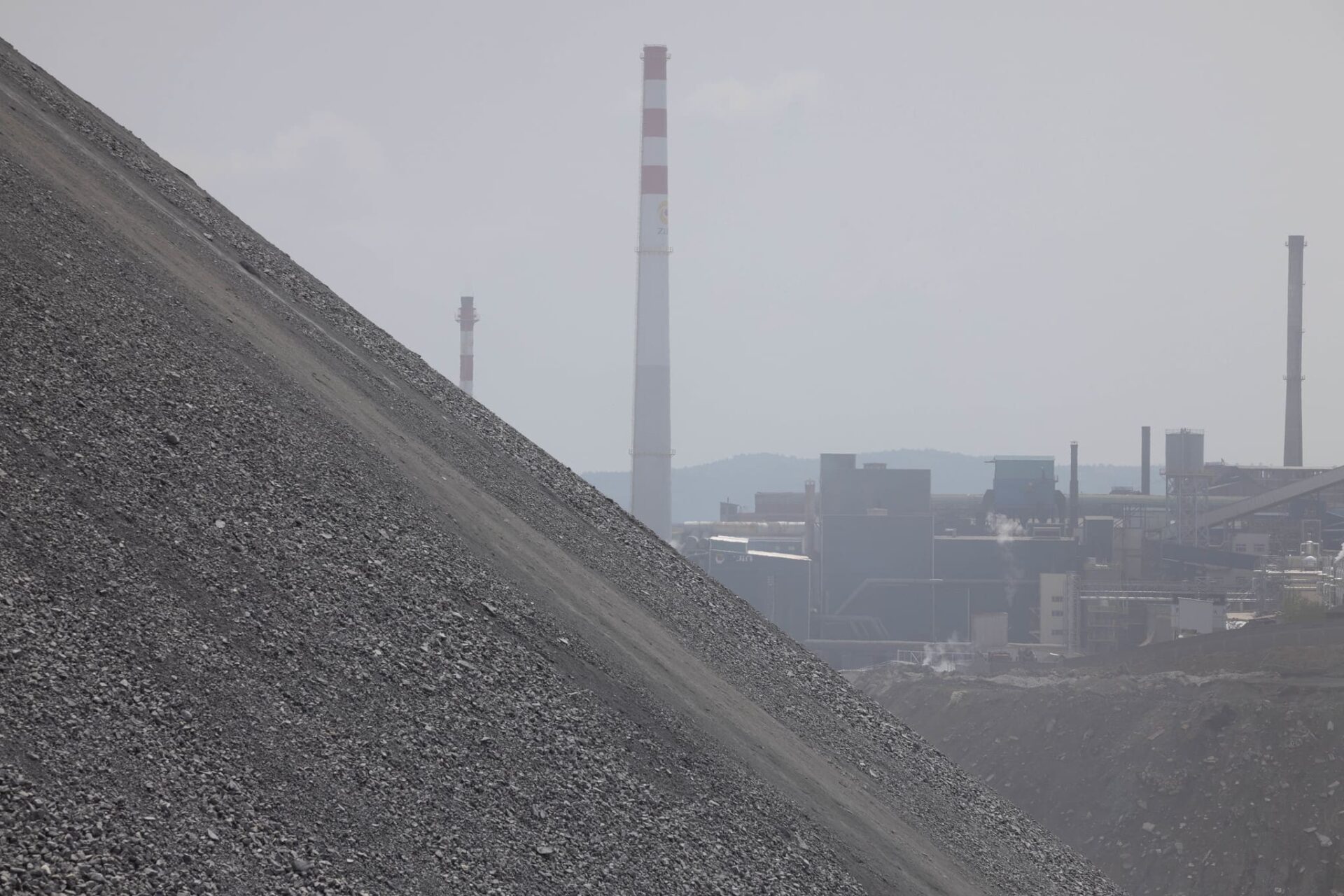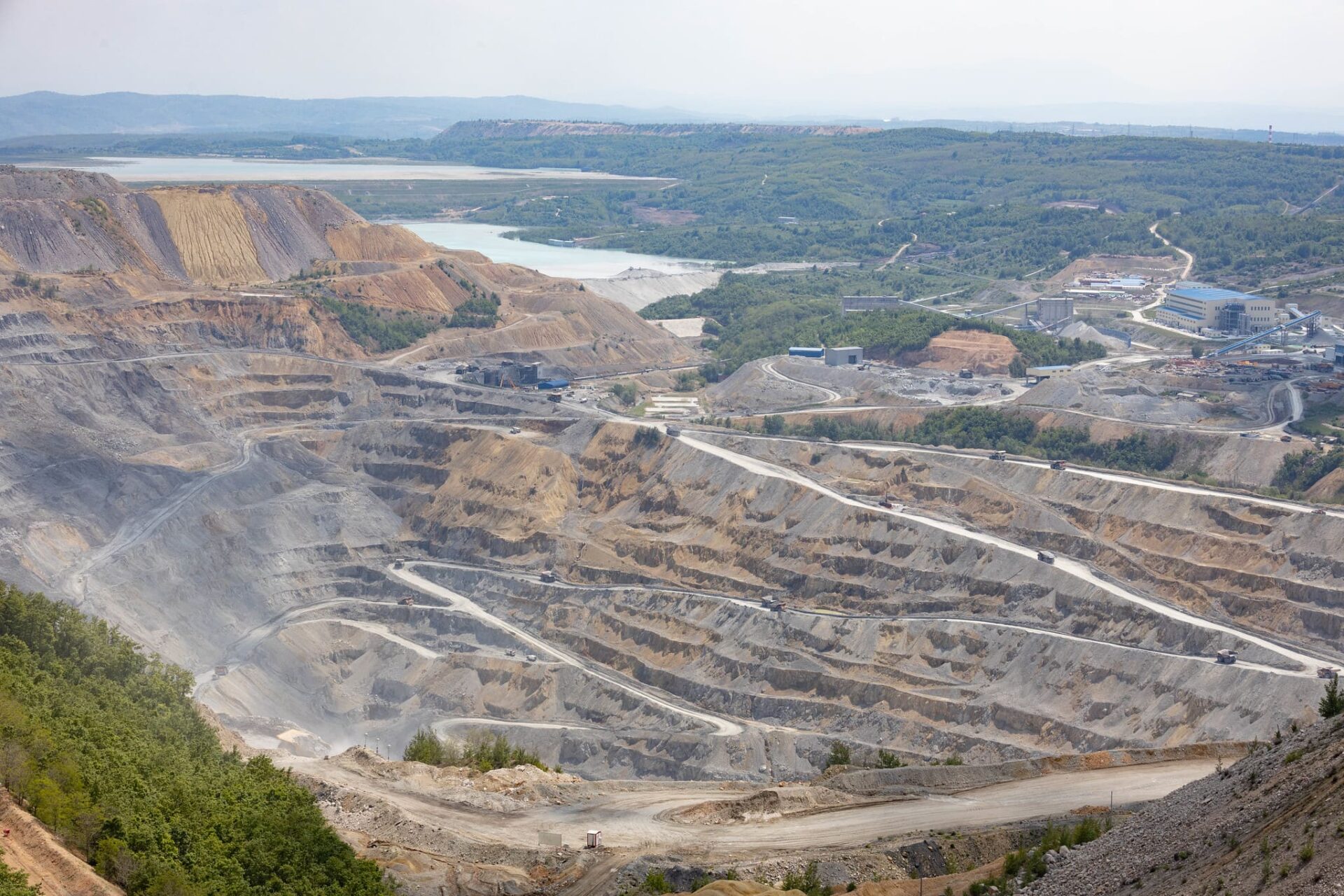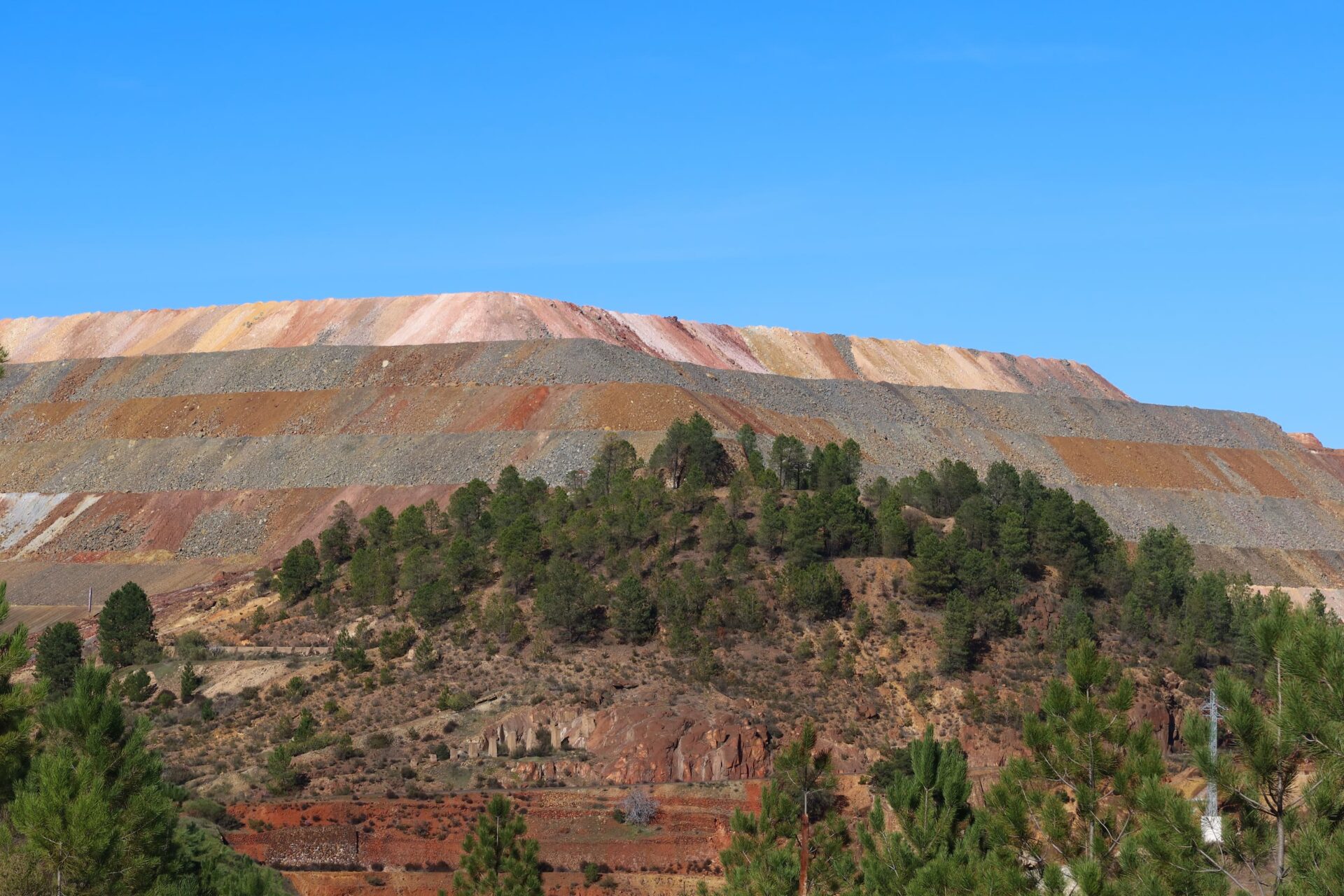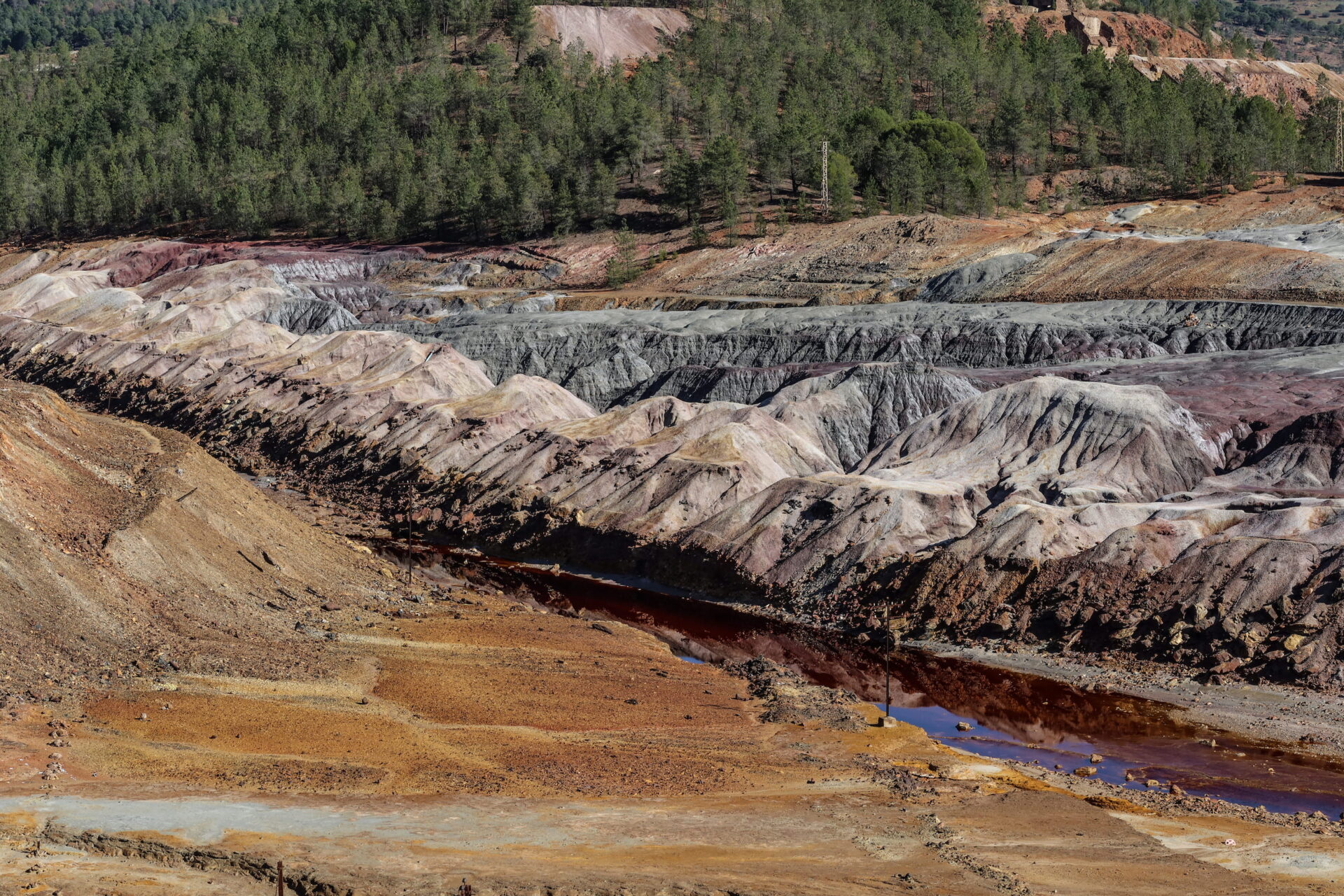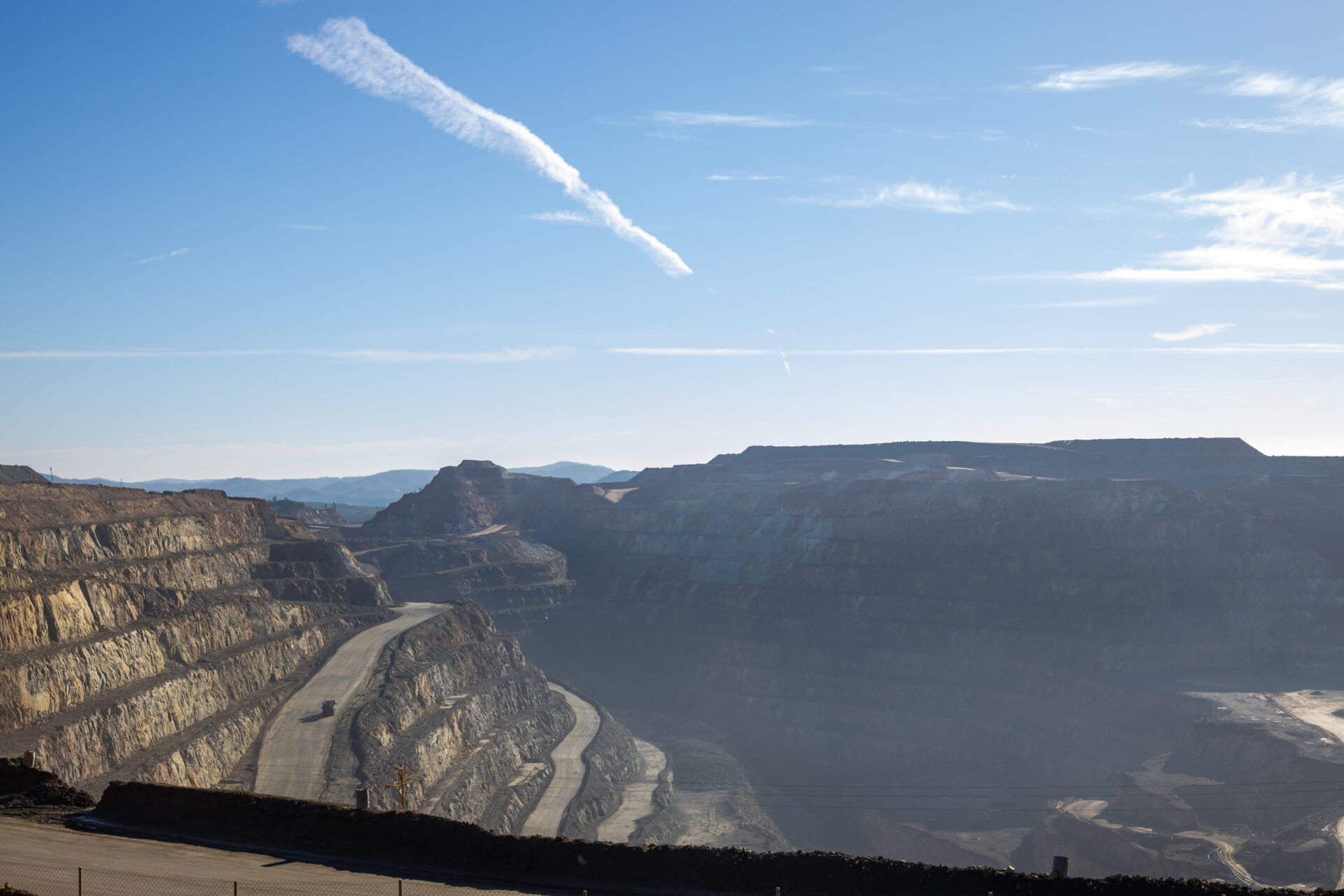Underground mining facilities
Mines use various underground facilities to facilitate mineral extraction and ensure worker safety. These facilities include ventilation systems to ensure air circulation, pumping stations to remove water, maintenance workshops for machines and extraction equipment, as well as electrical and communication installations.



These underground facilities vary according to the type of mine, the geology of the site and the extraction methods used.
Surface operations – Pit top
Surface mining facilities are essential to the smooth and safe operation of a mine. These include the headframe, the shaft control room, the electrical installations, the sorting room, the lamp house, etc.
The headframe is an imposing structure overlooking the entrance to the mine shaft. It houses the winches and hoisting systems used to lower and raise miners, equipment and ore. This structure is a centerpiece of the mine, symbolizing its activity and economic importance in the region.
Qualified operators supervise the lifting operations, ensuring that everything runs safely and efficiently. The room is equipped with advanced safety devices to prevent accidents and ensure the well-being of workers.
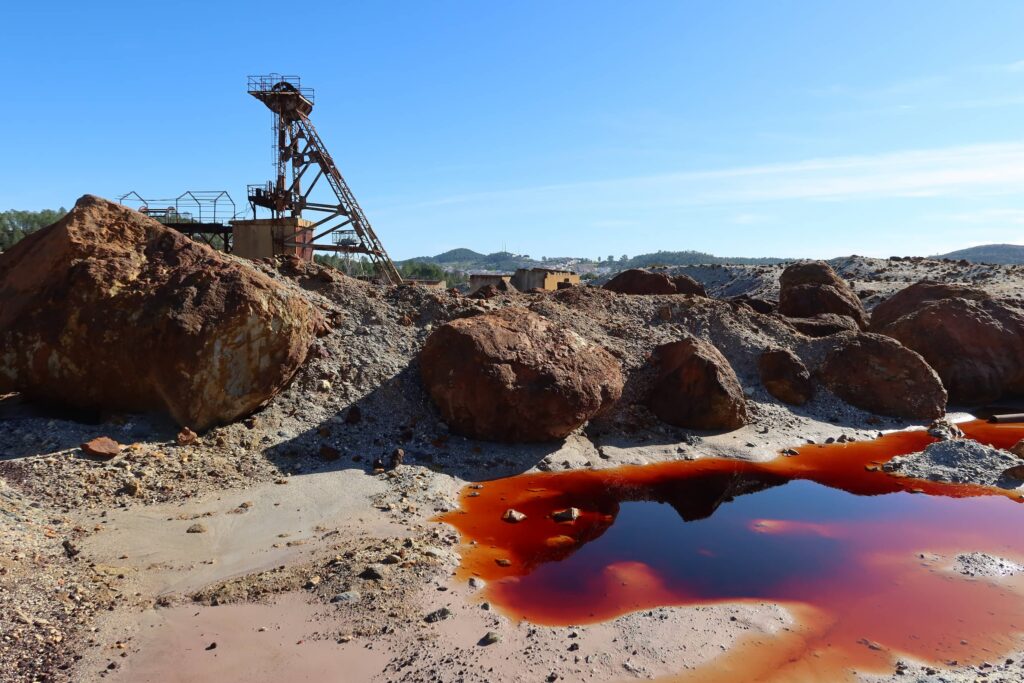
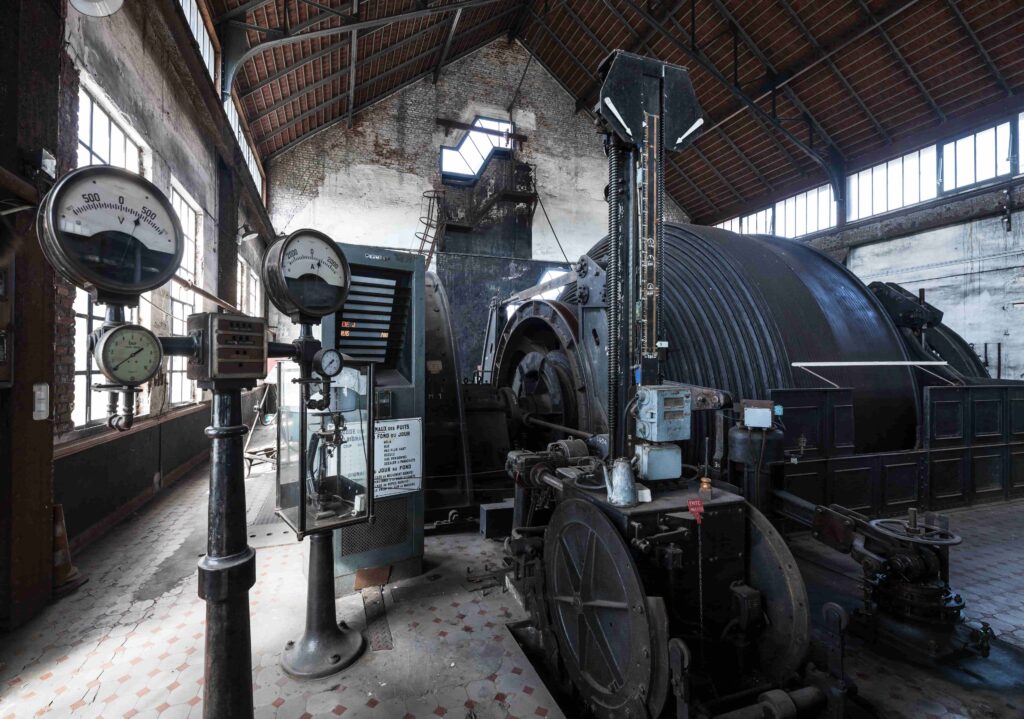
Electrical installations are crucial to powering the mine’s equipment and machinery, as well as providing light to the galleries and underground work areas. Transformers, generators and power cables are installed on the surface to distribute electricity safely and reliably throughout the mine.
Finally, the hanging room is a space dedicated to the storage and maintenance of tools, safety equipment and clothing used by miners. This is where workers prepare themselves before going down into the mine, and where they leave their personal belongings when they return to the surface. This room plays an important role in maintaining the organization and safety of mining operations.
Overall, these surface facilities are essential to support underground mining activities, ensuring both operational efficiency and worker safety.
Open-pit mining
An open-pit mine is a form of mining where ore is extracted from deposits close to the earth’s surface. Unlike underground mines, which require the excavation of tunnels and galleries beneath the surface, open-pit mining involves the excavation of large areas of land in the open.
In an open-pit mine, the extraction process begins with the removal of the layers of soil and rock overlying the mineralized deposit.
This can be done using heavy equipment such as mechanical shovels, bulldozers and dump trucks. Once the overlying layer has been removed, the ore is extracted using earth-moving equipment or explosives, then transported to a processing plant where it is treated to extract the valuable minerals.
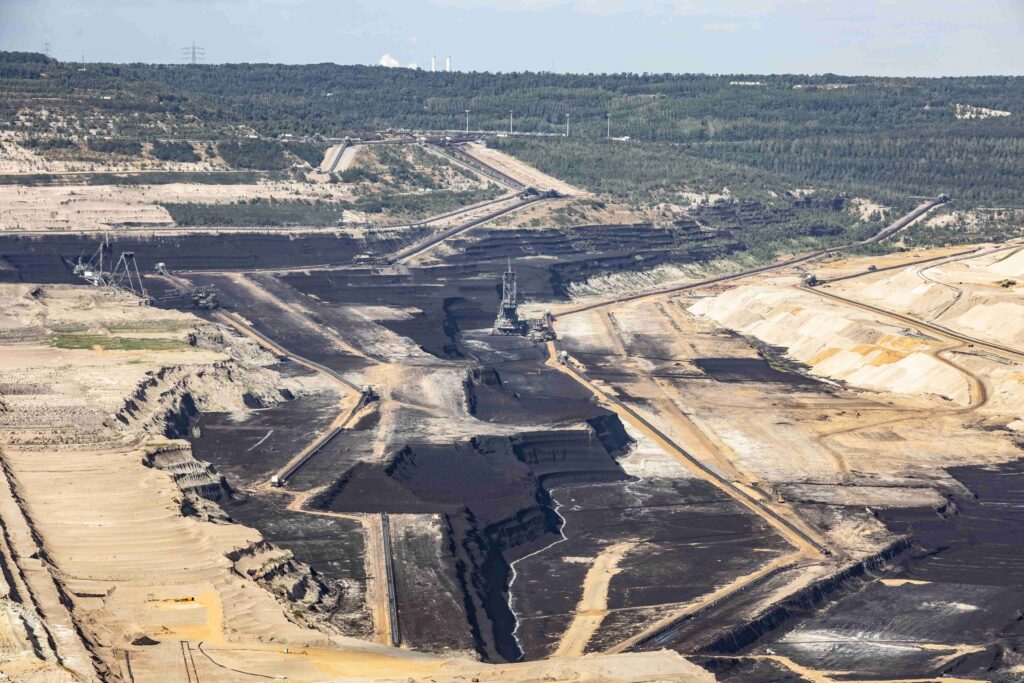
Open-cast mines are used to extract minerals such as coal, iron, copper, gold and diamonds, among others. They can be extremely large, and significantly alter the surrounding landscape. Although open-cast mines can be profitable due to their ability to extract large quantities of ore at lower cost, they will also have a significant impact on the environment, particularly in terms of soil degradation, loss of biodiversity and air and water pollution.


